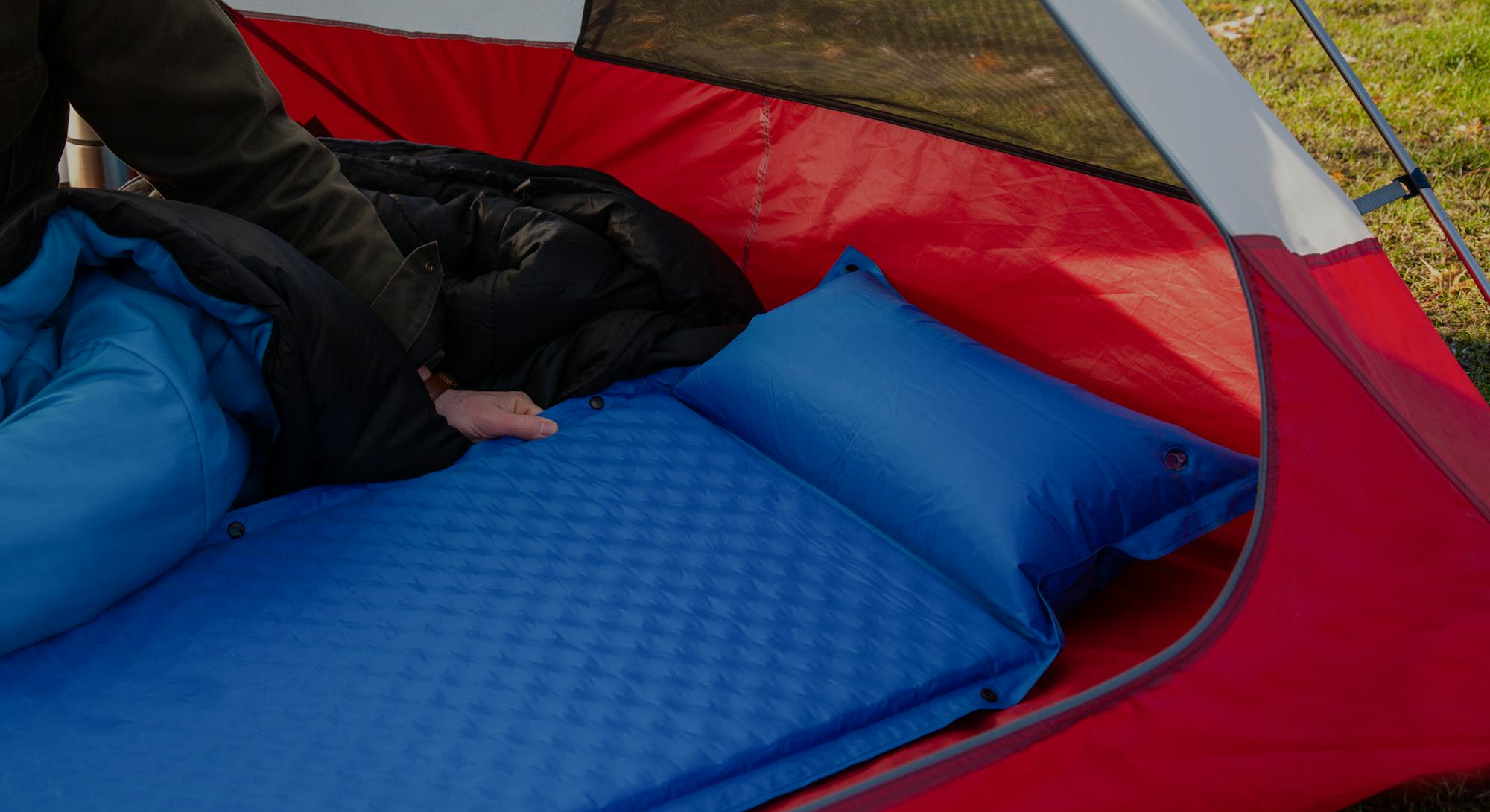Guides
Inflatable vs closed-cell: Which sleeping pad is the best for your adventure?
You need a sleeping pad that’s right for your adventure, so we’ve broken down the differences between pads and show you which ones are best.

If you’ve ever gone camping without a sleeping mat (scrimping on weight or just through forgetfulness), you’ll understand how invaluable that layer between your body and the ground is.
A sleeping mat (not to be confused with a sleeping bag) has two functions: comfort and insulation. To avoid waking up bone-chilled and with a mobility range that would make your grandparents look like contortionists, a sleeping mat is essential. But with so many on the market, how do we choose? Is an inflatable or closed cell sleeping mat better? What’s an R-value and why is it important? We’ve broken down the jargon to ensure that your tent feels like five-star luxury, even when camping on a glacier.
What R-value should I buy, and what does the R-value mean?
The R-value (Rv) of a sleeping pad is its resistance to heat flow, so essentially, how well it insulates. A higher Rv equals better insulation. If you’re going camping in snowy or icy conditions you’ll want a sleeping mat with a higher Rv than you’d use for summer festival camping.
As a general rule of thumb, a minimum Rv of five is recommended for winter adventures. For three-season camping, as low as two is often sufficient.
A higher Rv often means a higher weight and/or a significantly higher price tag. Thrifty life hack: if you stack two sleeping mats on top of each other, the Rv is incremental, so if you’ve got a sleeping mat with an Rv of two and another with an Rv of three, by using them together you’ll get an Rv of five.
What different types of sleeping mats are available?
The main types are closed-cell foam and inflatable. Some retailers sell down-filled which are extremely lightweight and warm, but come with a hefty price tag. Down can be the product of live plucking, so if investing in these make sure that your feather bed is responsibly sourced.
Closed-cell mats are made from cells that are completely closed. Air and moisture are unable to get inside the foam, making it a better insulator than open cells (which are essentially like sponges). They’re not usually heavy, but they can be bulky.
Inflatable mats are airtight shells that are inflated by blowing air into a valve. They can range from what looks like a pool float to more sophisticated structures with holes cut into them to make them lighter and more compact (not so good for floating around a pool with a cocktail). Inflatable mats are generally more compact and comfortable than closed cell mats. If you’re getting one mat for all of your outdoor adventures, inflatable is usually best.
So why does anyone buy a closed-cell mat?
Cost is a big driver, but inflatable mats, particularly thin, poor quality ones, can easily puncture. Many come with puncture repair kits, but this relies on access to water to check where the hole is. If you’re going to be camping on very rocky, jagged ground, a closed-cell mat is a better option.
Input may receive a portion of sales if you purchase a product through a link in this article. We only include products that have been independently selected by Input's editorial team.
The Alpkit Cloud Base is a lightweight, inflatable sleeping mat ideal for bike-packing and fastpacking where space is limited. It comes with a repair kit and stuff sack, is extremely compact when stashed, and weighs just 15oz. At this weight it’s recommended for three-season use, but is fantastic value for the price tag.
The Exped Synmat XP 9 LW mat provides a whopping Rv of 5.2 making it suitable for four seasons. It comes with an integrated pump for easy inflation and the polyester fabric top gives it great grip. Since it is quite heavy and bulky we recommend it for winter adventures.
At 25oz, the Sea to Summit Comfort Plus Insulated Sleeping Mat is one of the heavier mats on the list, but very insulating. The dual air chambers with synthetic insulation keep air trapped next to your body, giving the mat an Rv of 4. It’s very comfortable on rough terrain and made from durable nylon fabric. Recommended for three-season thru-hiking.
The Vaude Tour 3.8m Sleeping Mat is a heavy one (33oz), but the Rv of 4.5 means that it is more than suitable for three-season adventures. It comes with a repair kit and stuff sack, and Vaude is a leader in environmentally friendly products, so the mat is made using sustainable materials. Best for hiking and backpacking.
With an Rv of just 2.3, the Therm-a-rest NeoAir UberLite Sleeping Pad isn’t for Arctic camping but suited to ultralight, trail running, and fastpacking expeditions. At 6oz in the smallest size, it weighs next to nothing and packs down to fist-sized.
At this price, the Forclaz Folding Foam Trekking Mattress is not the most insulating mat on the market, but it offers excellent value for money and decent weight-to-warmth ratios (it weighs just 13oz and has an Rv of 2.1, so decent for summer adventures and temperate climates). Made from foam, it’s great for rough terrain that could risk puncturing an inflatable mat.
Incredibly comfortable, when inflated, the Big Agnes Q-Core SLX Insulated Mat provides over four inches elevation. The large side rails increase insulation on the sides of your body. At 16oz it’s a mid-weight mat and compact when deflated, making it a great all-rounder for three-season adventures.
This article was originally published on